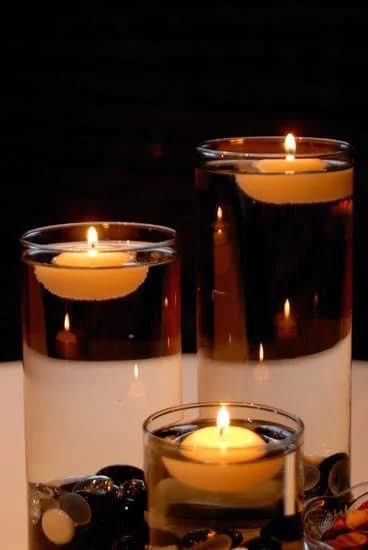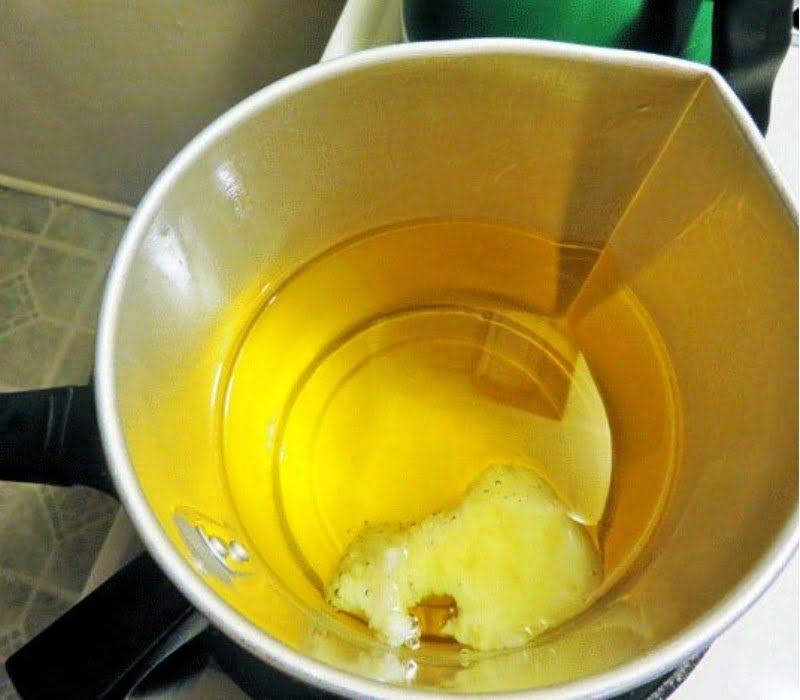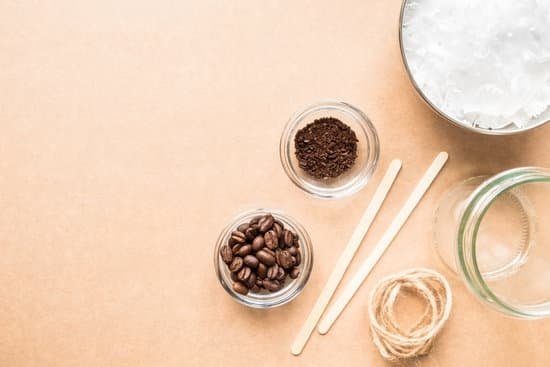Candle making oils have been a staple in the art of candle making for centuries. The use of essential oils and fragrance oils to enhance the aroma and therapeutic benefits of candles dates back to ancient civilizations. Historically, candle making oils were derived from natural sources such as plants, flowers, and fruits, creating a sensory experience that transcended time and culture.
Choosing the right candle making oils is essential for creating high-quality candles. Not only do these oils contribute to the scent and ambiance of the final product, but they also play a crucial role in the overall performance of the candle, including its burn time and fragrance throw. Understanding the importance of selecting the right oils is integral to achieving success in candle making.
There are various types of candle making oils available, each with its unique benefits and properties. From essential oils extracted through distillation to fragrance oils made through synthetic blending, these oils offer an array of scents and therapeutic qualities that cater to different preferences. Knowing the characteristics of each type of oil allows crafters to develop personalized blends that suit their desired outcomes.
The Importance of Choosing the Right Candle Making Oils
When it comes to making candles, choosing the right candle making oils is crucial for creating high-quality and long-lasting products. The type of oil used can affect the scent throw, burn time, and overall quality of the candle.
One important factor to consider when choosing candle making oils is the flash point. The flash point is the temperature at which an oil can ignite if exposed to a flame or spark.
Oils with a higher flash point are safer to use in candles, as they are less likely to cause a fire hazard. It’s also important to consider the viscosity of the oil, as this can affect how well it blends with the wax and how evenly it distributes throughout the candle.
Another consideration when choosing candle making oils is the scent profile. Different oils have different scent strengths and characteristics, so it’s important to select oils that will complement each other and create a balanced and appealing fragrance in the finished candle.
In addition to considering safety and scent profiles, it’s also important to choose high-quality, pure oils for candle making. Low-quality or diluted oils may not provide a strong scent throw or could even produce unpleasant odors when burned. Sourcing high-quality oils from reputable suppliers is essential for creating candles that meet your expectations in terms of both fragrance and performance.
| Factor | Consideration |
|---|---|
| Flash Point | Temperature at which an oil can ignite |
| Scent Profile | Different oils have different scent strengths and characteristics |
| Quality | Choosing high-quality, pure oils for candle making |
Different Types of Candle Making Oils and Their Benefits
Candle making oils have been used for centuries to add fragrance and ambiance to homes. The use of oils in candle making can be traced back to ancient civilizations such as the Egyptians and Romans, who used scented wax to create aromatic candles. Over time, the practice of using oils in candle making has evolved, resulting in a wide variety of options available today.
When it comes to choosing the right candle making oils, it is important to consider the type of wax being used and the desired fragrance strength. Different oils have different scent throw properties and burning characteristics, so it’s important to select the ones that will best suit your specific needs. For example, some oils are better suited for soy wax candles while others may work better with paraffin or beeswax.
There are various types of candle making oils available on the market, each with its own set of benefits. Essential oils, for example, are derived from plants and offer natural fragrances that can promote relaxation or invigorate the senses.
On the other hand, fragrance oils are synthetic but offer a wider variety of scents that may not be available in essential oil form. It is important to research and understand the benefits of each type of oil before incorporating them into your candle making process.
| Candle Making Oil | Benefits |
|---|---|
| Essential Oils | Natural fragrances that promote relaxation or invigorate the senses |
| Fragrance Oils | Synthetic scents that offer a wider variety of options |
Where to Source High-Quality Candle Making Oils
When it comes to making your own candles, sourcing high-quality candle making oils is crucial for creating a product that not only looks great but also smells fantastic. There are several options for finding top-notch candle making oils, each with their own set of benefits.
One popular option for sourcing candle making oils is through specialty candle making suppliers. These suppliers often carry a wide variety of scents and oils specifically designed for candle making. They may also offer guidance on which oils work best for different types of candles, such as soy or beeswax.
Another option is to look for essential oil retailers who offer high-quality, pure essential oils. While these may be a bit more expensive than fragrance oils, they provide a natural and potent scent to your candles. These retailers often have a range of unique and interesting scents that can add depth and complexity to your candles.
For those looking for more budget-friendly options, there are also online marketplaces where individuals sell homemade or handmade candle making oils. This can be a great way to find unique or custom blends that you might not find elsewhere. However, it’s important to do your research and ensure the quality of the oils before making a purchase.
No matter where you choose to source your candle making oils, it’s important to prioritize quality and purity. Look for reputable suppliers or sellers who are transparent about the origins and ingredients of their products. By choosing high-quality candle making oils, you can ensure that your homemade candles will have a beautiful scent that lingers long after they’ve been lit.
Tips for Mixing and Blending Candle Making Oils
When it comes to candle making, the choice of oils used can make a significant difference in the quality and fragrance of the final product. Here are some essential tips for mixing and blending candle making oils to create the perfect scent for your candles:
1. Understand the Notes: Just like in perfumery, candle making oils have top, middle, and base notes. It’s important to understand these notes and how they work together to create a harmonious scent.
For example, citrus oils such as lemon or orange are often used as top notes for their light and refreshing scent, while floral oils like lavender or rose make excellent middle notes. Base notes like vanilla or sandalwood provide depth and richness to the overall fragrance.
2. Start with Small Batches: When experimenting with different combinations of candle making oils, it’s best to start with small batches. This allows you to test the scents without wasting too much material if the blend doesn’t turn out as expected. Once you find a combination that works well, you can then scale up your production.
3. Keep Track of Formulas: As you experiment with different blends of candle making oils, it’s helpful to keep track of your formulas. This way, if you come across a blend that works particularly well, you can replicate it in the future. Keeping detailed records also allows you to make adjustments to your blends based on customer feedback or personal preferences.
By following these tips for mixing and blending candle making oils, you can create unique and delightful scents that will set your candles apart from the rest. Whether you’re creating candles for personal use or commercial purposes, taking the time to experiment with different combinations of oils can lead to beautiful and captivating fragrances that enhance any space.
Popular Scents and Combination Ideas for Candle Making Oils
When it comes to creating candles, the scent is a crucial element in ensuring that your product will be appealing to potential customers. Choosing the right candle making oils is essential in achieving the perfect scent for your candles. There are countless scents and combinations to choose from, each offering unique benefits and aromatic experiences.
Popular Single Scents
Some of the most popular single scents for candle making oils include lavender, vanilla, sandalwood, and citrus scents like lemon and orange. These scents are known for their calming, soothing, and refreshing qualities, making them ideal choices for candles meant for relaxation or aromatherapy purposes.
Combining Scents
One way to create unique and appealing scents for your candles is by combining different candle making oils. For instance, combining floral scents such as rose and jasmine with a hint of sandalwood can create a romantic and luxurious fragrance. Similarly, mixing citrus scents with herbal notes like eucalyptus or peppermint can result in an energizing and invigorating aroma.
Seasonal Scents
Another idea for candle making oils is to create seasonal scents that align with specific times of the year. For example, during the fall season, you might want to use warm and spicy scents like cinnamon or pumpkin spice. In contrast, during the summer months, fresh and fruity scents such as coconut or watermelon could be more appropriate. By considering seasonal preferences, you can appeal to a wider range of customers throughout the year.
How to Properly Use Candle Making Oils in Your Candles
When it comes to using candle making oils in your candles, there are a few important things to keep in mind to ensure that you get the best results. Using the right techniques can help you create high-quality, long-lasting, and beautifully scented candles that will delight your senses. Here are some tips for properly using candle making oils in your candles:
- Use the right amount: It’s essential to use the correct amount of candle making oils in your wax to ensure that the scent is not overpowering or too subtle. Typically, a good rule of thumb is to use about 1 ounce of fragrance oil per 1 pound of wax, but this can vary depending on the specific type and strength of the oil.
- Add at the right temperature: To properly incorporate candle making oils into your wax, it’s important to add them at the correct temperature. Most fragrance oils should be added when the wax is around 185°F to 195°F. This allows the oil to blend evenly with the wax and helps maximize its scent throw when the candle burns.
- Stir thoroughly: When adding candle making oils to your melted wax, make sure to stir thoroughly and continuously for at least 2 minutes. This ensures that the fragrance oil is evenly distributed throughout the wax and will result in a consistent scent throughout the entire candle.
By following these tips, you can ensure that you are properly using candle making oils in your candles and creating beautiful, fragrant creations that will delight anyone who experiences them.
Safety Precautions and Tips for Using Candle Making Oils
When working with candle making oils, it is important to prioritize safety at all times. These oils are highly concentrated and should be handled with care to prevent any accidents or mishaps during the candle making process.
Proper Storage and Handling
It is crucial to store candle making oils in a cool, dark place away from direct sunlight and heat sources. This will help preserve the quality and shelf life of the oils. Additionally, always ensure that the lids are securely fastened to avoid any spills or leaks. When handling the oils, use appropriate safety gear such as gloves and goggles to protect your skin and eyes.
Avoiding Overheating
When melting the wax and adding the candle making oils, it is important to avoid overheating the mixture. Excessive heat can cause the oils to evaporate or degrade, affecting the quality of your candles. Use a thermometer to monitor the temperature of the wax and oil mixture, ensuring it stays within the recommended range for optimal results.
Proper Ventilation
Working with candle making oils can release strong aromas into the air. To prevent overpowering scents or discomfort, make sure to work in a well-ventilated area. Opening windows or using a fan can help dissipate any strong odors while you are mixing and blending your candle making oils.
By following these safety precautions and tips, you can enjoy creating beautiful, fragrant candles with peace of mind knowing that you are handling candle making oils in a safe and responsible manner. Remember that safety should always be a top priority when working with any type of crafting materials, including candle making oils.
Creative Ways to Package and Display Candles Made With Oils
In conclusion, candle making oils have a rich history and play a crucial role in the quality and scent of the candles that are produced. When choosing the right candle making oils, it is important to consider factors such as the desired scent, burning time, and the type of wax being used.
With a wide variety of candle making oils available, each with its own unique benefits, it is essential to carefully select oils that will complement the intended use and purpose of the candles.
Sourcing high-quality candle making oils from reputable suppliers is crucial in ensuring that your candles will have consistent, pleasing scents. Additionally, tips for mixing and blending candle making oils can help create custom scents that cater to specific preferences or occasions.
Some popular scents and combination ideas for candle making oils include floral blends for relaxation, citrus blends for energy and refreshment, as well as earthy or woodsy blends for a cozy ambience. Properly using these oils in candles involves following safety precautions and tips to ensure a successful and safe manufacturing process.
Once the candles are created, there are many creative ways to package and display them made with oils. Whether they are sold commercially or given as gifts, thoughtful packaging can enhance the overall appeal of the product.
Consider unique containers such as vintage jars or glass bottles, add personalized labels or tags, and incorporate decorative elements like ribbons or dried flowers to elevate the presentation. By paying attention to every aspect of candle production – from choosing the right oils to displaying them in an appealing manner – candle makers can offer their customers a complete sensory experience that goes beyond just pleasant fragrances.

Welcome to my candle making blog! In this blog, I will be sharing my tips and tricks for making candles. I will also be sharing some of my favorite recipes.





